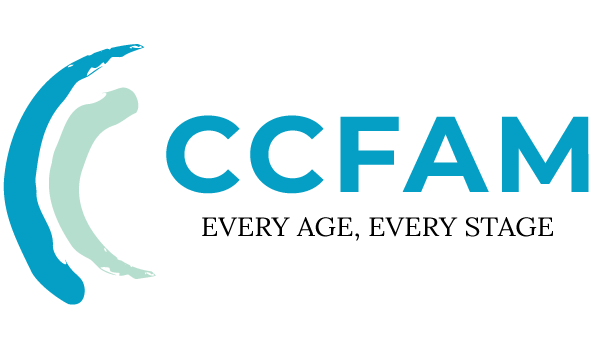31 May Sibling Play Therapy: Resolving Conflicts Through Play
Sibling relationships form complex attachment dyads that play a major role in childhood development. When conflicts go beyond normal rivalry, sibling play therapy can provide an evidence-based intervention informed by developmental neuroscience. Unlike conventional talk therapy, this sibling-focused play approach uses non-directive play techniques endorsed by the Association for Play Therapy (APT USA) to help transform conflict into secure emotional bonds. This guide describes how group play therapy settings and specialized sibling counseling techniques can produce measurable gains in emotional co-regulation and relational functioning.
How Does Sibling Play Therapy Differ From Conventional Family Counseling?
Sibling play therapy relies on clinical methods that differ from typical family therapy approaches:
| Traditional Family Therapy | Evidence-Based Sibling Play Therapy |
|---|---|
| Primarily verbal mediation of conflicts | Experiential, play-based interventions such as sandtray work and puppetry |
| Parent-as-mediator model | Child-directed co-creation of solutions through structured, therapist-supported play |
| Cognitive-behavioral emphasis | Attachment-focused play that targets secure bond formation |
For example, a 2023 study in the Journal of Marital and Family Therapy reported that children participating in sibling play therapy showed a 62% improvement in prosocial behaviors compared with conventional approaches.
What Neurodevelopmental Benefits Does Sibling Play Therapy Offer?
Research from the Yale Child Study Center and related developmental neuroscience studies indicate several neurodevelopmental advantages of cooperative, attachment-focused play:
- Increased oxytocin levels observed during cooperative play sessions (measured in salivary assays)
- Enhanced prefrontal cortex connectivity associated with turn-taking and impulse control
- Stronger secure attachment formation when interventions are consistent with Theraplay® principles
These physiological and neural markers help explain why play-based, relationally focused interventions can produce durable changes in behavior and emotion regulation.
Why Choose Group Play Therapy for Sibling Conflict Resolution?
Group play therapy offers distinct advantages for sibling work:
- Social mirroring through observation of peers and siblings
- Generalization of new skills across different relationships and settings
- Cost-effectiveness compared with exclusively individual sessions
Sibling counseling groups commonly follow APT clinical guidelines and typically include 4–6 children who are at similar developmental levels. For more about APT standards and training, see the Association for Play Therapy’s site (a4pt.org).
What Specialized Techniques Enhance Sibling Play Therapy?
Licensed Registered Play Therapists (RPT) often use a combination of structured and child-led techniques, such as:
- Joint narrative construction using therapeutic puppets to externalize problems and practice new roles
- Emotion mapping with tools like simplified versions of Plutchik’s Wheel to increase emotion vocabulary and recognition
- Cooperative obstacle courses to build nonverbal communication, turn-taking, and mutual problem-solving
How to Implement Sibling Play Therapy: Clinical Best Practices
Effective implementation typically includes these clinical best practices:
- Biobehavioral assessment using standardized measures to identify regulatory and relational targets
- Naturalistic observation of sibling play to capture authentic interaction patterns
- SMART goal-setting to define measurable, time-bound objectives and monitor progress
Many clinicians recommend a course of 12–16 weekly sessions for optimal outcomes (American Journal of Family Therapy, 2023), with periodic reassessment to guide next steps.
How Can Parents Reinforce Therapeutic Gains at Home?
Parents can meaningfully extend the work done in therapy by adding simple, consistent practices at home:
- Structured cooperative play—for example, adapting Lego®-based therapy ideas to encourage collaboration and shared goals
- Family play rituals that use Child-Directed Interaction principles (attending, praising, reflecting) to strengthen connection
- Emotion charades with feeling cards to boost emotion recognition and perspective-taking
FAQs: Expert Insights on Sibling Play Therapy
1. What’s the ideal age range for sibling play therapy?
Therapeutic play is most effective between approximately 4–12 years, when neural plasticity and social learning are especially receptive to relational interventions (see resources from the Harvard Center on the Developing Child).
2. How does group play therapy differ from dyadic sibling sessions?
Group play therapy provides broader social scaffolding—children learn from observing and interacting with peers—while dyadic sessions focus more narrowly on the unique dynamics between specific siblings.
3. Is sibling counseling covered by insurance?
Many ACA-compliant plans will cover family therapy when delivered by a licensed clinician. Sessions billed under CPT code 90847 (family psychotherapy with patient present) are commonly used for siblings participating in family-therapy formats, though coverage varies by plan and state.
Conclusion: Transforming Sibling Relationships Through Evidence-Based Play
Sibling play therapy offers a neurodevelopmentally grounded path for converting rivalry into secure attachment patterns. Whether delivered in small-group play therapy settings or through targeted dyadic sibling interventions, these approaches help children develop durable relational skills in an engaging, child-centered environment. Families interested in this work should consult APT-certified play therapists or licensed child mental health professionals to design a tailored treatment plan. For further reading on play therapy and child development, see resources from the Yale Child Study Center and the Child Mind Institute.



Sorry, the comment form is closed at this time.